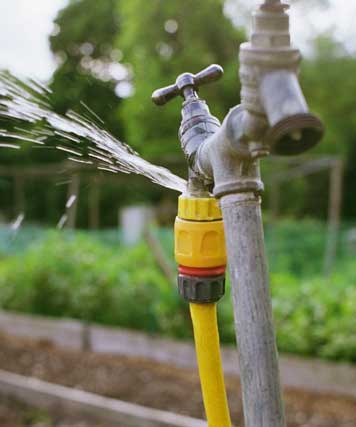Guide To Water Leak Detection At Home
Guide To Water Leak Detection At Home
Blog Article
We have stumbled on this post relating to Detecting hidden plumbing leaks down the page on the internet and decided it made sense to relate it with you on my blog.

Early discovery of dripping water lines can reduce a potential disaster. In addition to conserving you cash, it will decrease the worry as well as frustration. The moment you find a leak, calling your plumber for fixings is the most effective service. Some small water leakages might not be visible. Here are some hacks that aid if you can not find it with your naked eyes.
1. Examine the Water Meter
Inspecting it is a surefire method that assists you find leakages. If it relocates, that shows a fast-moving leakage. This indicates you may have a slow-moving leak that might even be underground.
2. Examine Water Intake
Assess your water bills and track your water intake. As the one paying it, you must observe if there are any type of disparities. If you spot sudden changes, in spite of your intake being the same, it means that you have leakages in your plumbing system. Remember, your water expense ought to fall under the exact same array monthly. An abrupt spike in your expense indicates a fast-moving leakage.
A consistent boost every month, even with the exact same behaviors, reveals you have a slow leakage that's additionally gradually rising. Call a plumber to extensively examine your home, particularly if you feel a cozy area on your flooring with piping below.
3. Do a Food Coloring Examination
When it comes to water intake, 30% originates from bathrooms. Test to see if they are running correctly. Decline specks of food color in the container and wait 10 minutes. There's a leakage in between the tank and dish if the shade in some way infiltrates your bowl throughout that time without flushing.
4. Asses Outside Lines
Do not fail to remember to inspect your exterior water lines as well. Test spigots by connecting a garden hose. Should water seep out of the link, you have a loose rubber gasket. Replace this as well as ensure all connections are limited. If you have actually got a lawn sprinkler, it will aid get it properly checked out as well as kept each year. One little leak can throw away lots of water and also surge your water costs.
5. Evaluate the situation as well as evaluate
Home owners should make it a behavior to inspect under the sink counters and also inside cabinets for any type of bad odor or mold growth. These two red flags show a leak so punctual attention is called for. Doing routine examinations, even bi-annually, can conserve you from a significant issue.
Examine for discolorations as well as deteriorating as a lot of home appliances and also pipes have a life expectations. If you suspect leaking water lines in your plumbing system, do not wait for it to escalate.
Early discovery of dripping water lines can reduce a possible calamity. Some small water leakages may not be visible. Examining it is a guaranteed method that aids you uncover leaks. One tiny leakage can waste bunches of water and increase your water bill.
If you think dripping water lines in your plumbing system, don't wait for it to escalate.
How to Know If Your Home Has a Hidden Leak
Water Meter Reveals Inexplicable Water Usage
If you’d like to test whether or not there’s a leak somewhere in your home, you can do this using your water meter. Here is how to conduct the test:
Don’t use any water in your home for at least 30 minutes; this also means not turning on faucets or water-using appliances.
Go outside, and check your water meter for activity.
If your water meter shows that there was activity, even though no one was using any water, this proves that there is a leak in your home.Visible Mold or Mildew Growth
Leaks behind walls create moist, dark environments that allow mold and mildew to grow and thrive. Eventually, you might see mold growth forming on the wall closest to a hidden leak.
If mold is growing in an area that receives a high amount of moisture, such as a bathroom, it may simply be an indication that better ventilation is needed. However, if you see mold growth on a wall or the ceiling in an area where you would not expect, you probably have a hidden leak.
Musty, Mildew Odor
Sometimes you might not be able to see the mold or mildew that is growing as a result of a leak. However, the smell can give the problem away just as easily. If you catch a whiff of something musty, there’s a good chance that old water is collecting somewhere in your home that you can’t see.
Stained/Warped Walls, Ceilings, or Floors
When your home soaks up water, a variety of red flags can become visible, including ceiling stains, bubbling drywall, warped walls, and sagging floors. While these issues can be caused by excess humidity, they can also be signs that a pipe or plumbing connection has started leaking behind your walls.
Inexplicably High Water Bill
After a while, you get a general sense for what your water bill should be. If you own a pool or sprinkler system, your bill will tend to be higher during summer. However, if you receive a water bill that seems especially high, and you can’t figure out what caused it, then you may have a hidden leak somewhere that’s increasing your bill.
https://www.plumbingjoint.com/blog/2019/july/how-to-know-if-your-home-has-a-hidden-leak/

Do you like reading about Locating water leaks? Create feedback down the page. We'd be pleased to see your opinions about this write-up. Hoping that you come back again in the future. Sharing is caring. One never knows, you will be helping someone out. Thanks so much for your time spent reading it.
Report this page